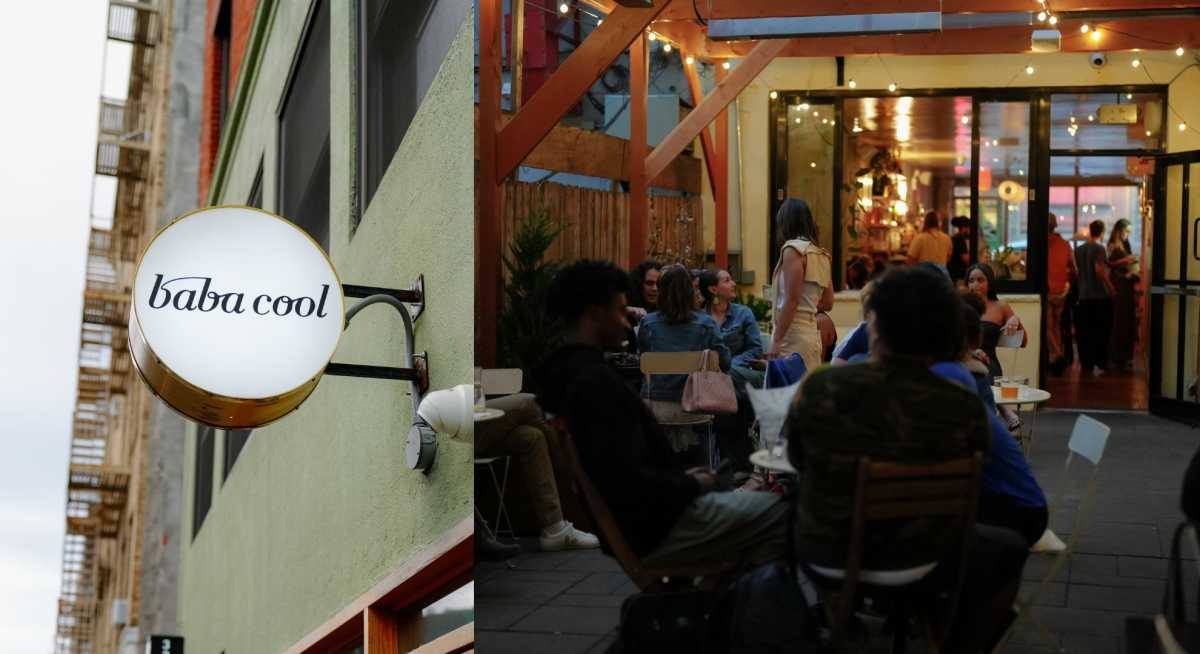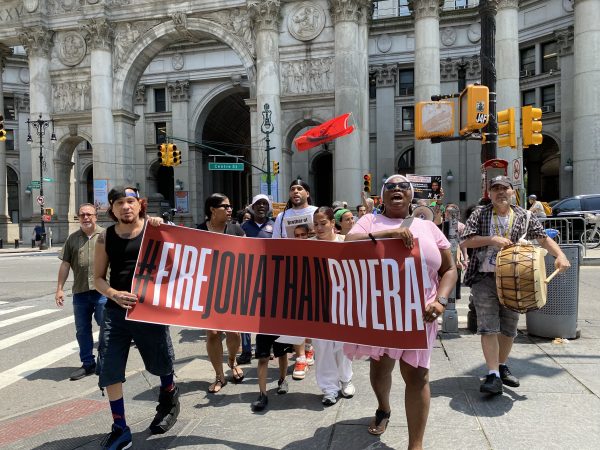One of the most-iconic images of 20th-century Socialism has been repurposed to serve capitalism — and has set off a war worthy of those long-battling ideologies.
Habana Outpost owner Sean Meenan said he was only trying to “unite” the neighborhood when he took a famous photo of Cuban revolutionary Che Guevara and had it repainted with the image of rapper Notorious B.I.G., complete with the restaurant’s “H” logo in place of the red star on the guerilla’s cap.
The mural, located on Meenan’s builing at S. Portland and Fulton streets, includes one of Biggie Smalls’s lyrics, “Spread love/It’s the Brooklyn way” — but it has has been anything but unifying.
Nowhere on the colorful painting is any credit to man who actually he designed the mash-up: 21-year-old Parsons student John Garcia.
“It’s frustrating, because I literally laid out everything on the wall,” said Garcia, who is upset that his name is absent from most of the company’s material on the mural. “They didn’t mention me and they said in the future in they would.”
Garcia, perhaps, doth protest too much. After all, his painting of Biggie Smalls itself was appropriated from the Cuban Revolution’s ultimate symbol — the famous Alberto Korda photograph of Che — to service Meenan’s eco-revolutionary, Habana Outpost brand.
In fact, only Meenan’s website — seanmeenan.com — is credited on the painting. But the mural’s crew included established graffiti artists such as Cern One, and legend Lee Quinones, who was initially credited with the whole thing when the New York Times’ Fort Greene blog initially reported the story.
To Meenan, the artistic controversy is over.
“The mural is what it is,” he said. “It’s done.”
But not to Garcia.
“One of the founding things when I negotiated it was that my name was on the wall, and I would have liked it to be there,” he said. “It’s my work and I’d like it to be treated as such.”
Beyond the issue of credit is the issue of imagery. Should Communist icons be recycled into capitalist branding? In a word, yes.
“It’s not uncommon for revolutionary imagery to be used for commercial purposes,” said Lincoln Cushing, a Cuban-born expert on Communist poster art.
The iconic Korda photo of Che, for example, is one of the most recognizable and marketable images in the world — and its use to brand products such as vodka, ice cream, and T-shirts, has created enough controversy to fill books.
Meenan said he saw no irony in using the communist imagery to promote his company’s logo or his Habana Works project, which sponsors urban environmentalism projects.
“We give a lot back to the community,” said Meenan. “I don’t think that Fidel or Che or anybody else would have a problem with us.”
Reach reporter Eli Rosenberg at erosenberg@cnglocal.com or by calling (718) 260-2531. And follow his Tweets at @from_where_isit.


























